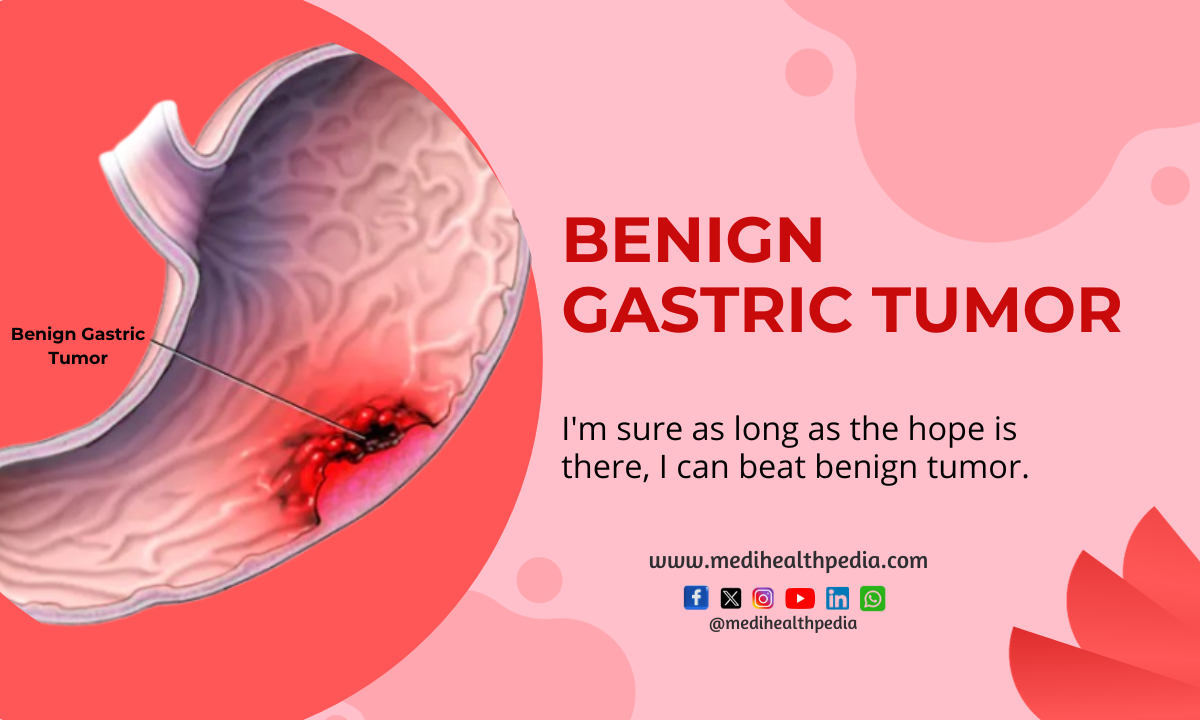Benign Gastric Tumors: A Comprehensive Guide to Understanding, Diagnosing, and Managing
- Benign Gastric Tumors: A Comprehensive Guide to Understanding, Diagnosing, and Managing
- Introduction
- Understanding the Stomach's Significance
- Clinical Presentation: Unveiling the Symptoms
- Stages of Benign Gastric Tumor Development
- Workup: Unraveling the Diagnosis
- Complications and Associated Conditions
- Conventional Treatment Options
- Prevention Strategies
- Herbal Medicines for Benign Gastric Tumors
- Lifestyle Modifications
- Conclusion
Introduction
Benign gastric tumors, though non-cancerous, are not to be underestimated. In this comprehensive guide, we will embark on a journey to explore the complexities of benign gastric tumors. From the foundational understanding of the stomach’s role in digestion to the nuances of these growths, we’ll cover practice essentials, signs and symptoms, clinical presentation, stages of tumor development, diagnostic workup, potential complications, conventional treatment options, preventive strategies, herbal remedies for treatment, lifestyle modifications, and conclude with invaluable insights for those navigating this seemingly benign yet impactful diagnosis.

Understanding the Stomach's Significance
Before we delve into the intricate world of benign gastric tumors, it’s crucial to establish a firm grasp of the stomach’s role in our digestive system.
- The Stomach: A Digestive Workhorse
The stomach is a central component of our digestive system, responsible for breaking down the food we consume. It accomplishes this through the secretion of gastric juices containing digestive enzymes and acid, facilitating the digestion of proteins and other nutrients.
- Demystifying Gastric Tumors
Gastric tumors are abnormal growths that can develop within the stomach. These growths can either be benign, signifying their non-cancerous nature, or malignant, which implies cancerous growth. Benign tumors, unlike their malignant counterparts, tend to be slow-growing and do not typically invade surrounding tissues or metastasize to distant parts of the body.
Clinical Presentation: Unveiling the Symptoms
Benign gastric tumors frequently manifest with various symptoms. These symptoms may vary based on the size, location, and their impact on the stomach’s functionality. Common clinical presentations may include:
- Abdominal Pain: Dull, aching, or cramp-like pain in the upper abdomen.
- Nausea and Vomiting: Nausea, sometimes escalating to vomiting.
- Feeling of Fullness: Early satiety, even after consuming modest meals.
- Unexplained Weight Loss: A noticeable drop in weight without intentional changes in diet or exercise.
- Gastrointestinal Bleeding: Evidence of blood in the stool or black, tarry stools.
- Anemia: A reduced red blood cell count, often caused by chronic bleeding.
- Digestive Problems: Difficulty swallowing, indigestion, or discomfort following meals.
Stages of Benign Gastric Tumor Development
The progression of benign gastric tumors unfolds in several stages. While these growths are non-cancerous, their growth may advance through the following stages:
- Polyp Formation: The initial stage involves the formation of a polyp, a small growth protruding from the stomach’s lining.
- Polyp Growth: Over time, these polyps may increase in size and number.
- Symptom Development: As the polyps grow in size and number, they can elicit the aforementioned symptoms.
Workup: Unraveling the Diagnosis
The diagnostic process for benign gastric tumors typically involves a comprehensive evaluation, employing a blend of clinical assessment, imaging studies, and laboratory tests:
- Imaging Studies
- Upper Gastrointestinal Endoscopy: This procedure employs an endoscope to visualize the stomach lining, including any polyps or tumors.
- Barium X-ray: In this test, a contrast material is ingested, and X-rays are taken to delineate the stomach’s shape and any abnormalities.
- CT Scan: Computed tomography furnishes detailed cross-sectional images of the stomach and its adjacent structures.
- Biopsy
To confirm the diagnosis of benign gastric tumors and distinguish them from potentially cancerous growths, a tissue biopsy is often required. Biopsies are frequently obtained during an endoscopy procedure.
Complications and Associated Conditions
While benign gastric tumors do not possess malignant qualities, they can give rise to various complications, particularly if left unaddressed:
- Bleeding: Large or rapidly expanding benign tumors may induce gastrointestinal bleeding, which can lead to anemia and black, tarry stools.
- Obstruction: These tumors can obstruct the stomach or the opening between the stomach and the small intestine, resulting in symptoms like vomiting and difficulty swallowing.
- Iron Deficiency Anemia: Chronic bleeding from a benign gastric tumor can culminate in iron deficiency anemia.

Conventional Treatment Options
The approach to treating benign gastric tumors hinges on an array of factors, including the tumor’s size, location, and its impact on the patient’s well-being. Common treatment modalities encompass:
- Observation
In instances involving small, asymptomatic tumors, healthcare providers may opt for a “watch and wait” approach. This approach entails monitoring the tumor’s growth and the patient’s symptoms over time, without an immediate need for intervention.
- Endoscopic Removal
Small benign tumors, such as polyps, can frequently be removed during an upper gastrointestinal endoscopy procedure.
- Surgical Removal
For larger or symptomatic tumors, surgical removal of the tumor or a portion of the stomach may become a necessity.
- Medication
In select cases, healthcare providers may prescribe medications to manage symptoms or reduce stomach acid production.
- Regular Follow-Up
Even following treatment or removal, routine follow-up appointments may be recommended to monitor the patient’s progress and ensure that the tumor does not reappear.
Prevention Strategies
Preventing benign gastric tumors predominantly centers on the management of risk factors:
- Healthy Diet: Adopting a balanced diet rich in fruits, vegetables, and whole grains may reduce the risk of benign gastric tumors.
- H. pylori Infection: Treating and eradicating H. pylori infection can diminish the risk of gastric polyp development.
- Smoking Cessation: Abandoning smoking is an essential step to minimize the risk of benign gastric tumors.
Herbal Medicines for Benign Gastric Tumors
While herbal remedies are generally not the primary treatment for benign gastric tumors, some herbs may offer supportive benefits:
- Aloe Vera: Acknowledged for its anti-inflammatory properties, aloe vera may help soothe the stomach lining.
- Turmeric (Curcumin): Celebrated for its anti-inflammatory and antioxidant properties, curcumin may exhibit potential as an adjunct therapy.
However, herbal remedies should be used under the guidance of healthcare providers and should never be a substitute for established medical treatments.
Lifestyle Modifications
Lifestyle modifications can substantially influence the management and overall well-being of individuals with benign gastric tumors:
- Nutrition: Pursuing a well-balanced diet to support overall health and maintain physical vigor.
- Stress Reduction: Effectively managing stress through relaxation techniques like meditation and deep breathing exercises can be immensely beneficial for individuals contending with benign gastric tumors.
Conclusion
Benign gastric tumors, although non-cancerous, should not be underestimated. Early recognition of symptoms and timely diagnosis are crucial for effective management.
Accurate diagnosis, appropriate treatment, and comprehensive care are imperative for individuals navigating benign gastric tumors. While herbal remedies and lifestyle modifications can provide valuable support, they should always be utilized under the guidance of healthcare providers.
In conclusion, with the right approach and appropriate medical care, individuals can successfully navigate benign gastric tumors, ensuring a better quality of life and overall well-being.

